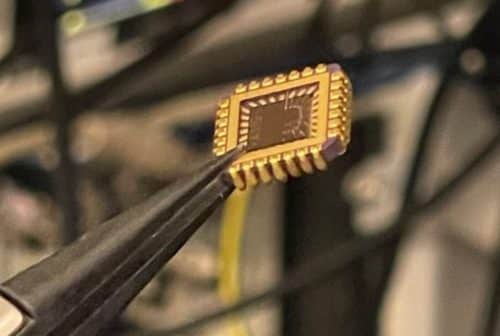“The results of the study open a new realm of many detection and imaging applications”
The electrical characteristics of a material are determined by how electrons flow through it. When a voltage is put across a conducting substance, electrons begin to flow, resulting in an electrical current. Some electrons travel in straight lines along the electric field. However, electrons can bend when a magnetic field is applied, so these aren’t the only paths they can follow. “Hall responses” are transverse signals produced by such bent electrons.
It is now possible to bend electrons in the absence of magnetic fields! Researchers from Graphene Flagship and collaborators from the United States, Singapore, and Japan employed circular polarised light to produce bent electronic flows in bilayer graphene.

Jianbo Yin from the Graphene Flagship partner ICFO is the first author of the study. He remembers how it all started. “This collaborative study began in 2016 with a conversation at a scientific conference. Electrons are not just particles, they also have a quantum wave-like nature”. The wave pattern of electrons in layered quantum materials, such as bilayer graphene, can exhibit a complicated winding known as quantum geometry. “We talked about the possibility of harnessing quantum geometry in bilayer graphene to bend the flow of electrons with light instead of using magnetic fields”. Keeping this in mind, the group decided to take on the challenge of reproducing this rare phenomena empirically.
There are two pockets of electron valleys in bilayer graphene: when an electric field is applied perpendicularly, the quantum geometrical features of electrons in these two valleys cause them to bend in different directions. As a result, their Hall effects become null.
The researchers discovered that by shining circularly polarised infrared light onto a bilayer graphene device, they were able to selectively stimulate one specific valley population of electrons in the material, resulting in a photovoltage that was perpendicular to the normal electron flow.
Frank Koppens, co-leader of the study and Graphene Flagship Leader for Photonics and Optoelectronics highlights says, “We engineered the device and setup in such a way that current only flows with light illumination. With this, we were able to avoid the background noise that hampers measurements and achieve a sensitivity in the detection several orders of magnitude better than any other layered materials.”
Yin remarks, “we can control the bending of the electrons with the out-of-plane electric field we apply. We can change the bending angle of these electrons, which can be quantified by the Hall conductivity. By controlling the voltage ‘knob’, the Berry curvature [one characteristic of quantum geometry], can be tuned, which can lead to a giant Hall conductivity.”
Read the entire study here.






